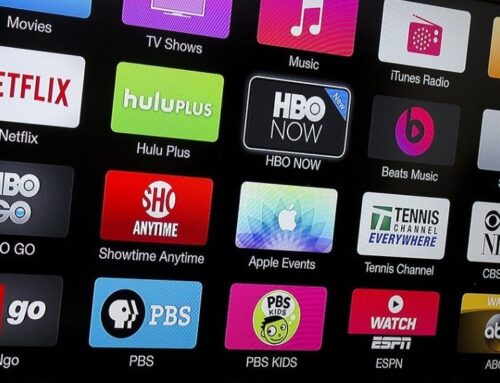Scaling Successful DRTV Campaigns: The Role of Creative Testing
Direct Response Television (DRTV) has been a powerful tool for businesses seeking to generate immediate responses from viewers. As competition intensifies and consumers have more viewing options than ever, scaling successful DRTV campaigns require a refined strategy that incorporates data-driven insights. One of the most effective ways to optimize and scale these campaigns is through rigorous creative testing. A strong focus on testing different creatives can lead to better performance, more efficient ad spend, and sustained growth. But the key lies in understanding how to execute creative tests effectively and make data-backed decisions.
Why Creative Testing Matters in DRTV
Creative testing is critical for success in DRTV because the creative itself—meaning the content and structure of your ad—is often the largest driver of performance. Even with the best targeting, timing, and media buy, a subpar creative will underperform. Testing different versions of a creative allows marketers to identify which message, tone, format, and call to action resonate best with their audience, ultimately leading to better conversion rates and a higher return on investment.
Moreover, in the linear nature of traditional television, where ads are broadcast to broad audiences, pinpointing the most effective creative becomes even more essential. Without the granular targeting available in digital advertising, your creative needs to do most of the heavy lifting.
A/B Testing Creatives: Best Practices
A/B testing is the gold standard for identifying high-performing creatives in DRTV campaigns. In an A/B test, two or more variations of a creative are shown to similar audiences at similar times, and their performance is measured against specific metrics, such as response rate, cost per lead (CPL), or return on ad spend (ROAS). But to maximize the effectiveness of these tests, certain best practices must be followed.
-
Test One Element at a Time
The most effective A/B tests isolate one variable. Whether it’s the offer, the length of the ad, the call to action, or the tone of the message, focusing on a single element ensures that any differences in performance can be attributed to that change. For example, if you change both the offer and the script in a single test, it will be difficult to determine whether it was the altered offer or the new wording that led to better results. Isolating variables keeps your tests clean and makes the insights more actionable.
-
Run Tests Across Similar Media Buys
To ensure fair comparison, A/B tests should be run across similar media placements, ideally within the same time slots and networks. In the world of DRTV, linear television introduces the challenge of varying audience sizes and demographics depending on the time of day and the channel. If one version of the creative runs during primetime and the other in an off-peak slot, the test results won’t accurately reflect the effectiveness of the creative itself. The same principle applies to the cost of the media buy—ads placed in higher-priced media slots may deliver better performance simply because they reach more of your target audience.
-
Track Key Metrics at All Points in the Funnel
If possible, it can be helpful to use customer ID to keep track of initial responses versus downstream activity. A creative that initially did not seem good due to low call rates might have a much higher rate of converting those calls into sales, for example. In other words, it could be helpful to keep an open mind about creatives that are removed from rotation after an initial test.
Correlating Performance to Specific Creatives: Challenges and Solutions
One of the major challenges in scaling DRTV campaigns is correlating performance to a specific creative in a consistent and reliable manner. Unlike digital ads, where real-time data flows in and detailed targeting can provide direct feedback, DRTV operates in a more linear broadcast environment. Thus, the feedback loop may not be as immediate, and external factors like competitive ads, seasonal fluctuations, and media placement can obscure which creative is truly responsible for performance variations.
-
Use Consistent Baselines
Establishing a performance baseline before running creative tests can help attribute success or failure to the creative itself, rather than external factors. For example, knowing that your average cost per response on a given network and timeslot is about $100 provides a useful reference when assessing whether a new creative’s performance is acceptable. Looking at overall baselines can be helpful, but the more specific you get, the better understanding you will have of your new creative test.
-
Account for Seasonality and External Factors
When comparing the performance of different creatives, consider the time of year, day of the week, or any external events that may influence the results. A high-performing creative during a holiday season might not maintain the same level of performance once the season ends. Specific stations’ demographics might also make a difference in which version of a creative performs best. Understanding these externalities will help you isolate the creative’s actual impact.
-
Embrace Long-Term Testing
In some cases, especially with DRTV, long-term testing is required to gain accurate insights. Since DRTV campaigns may not generate immediate results, short-term tests can sometimes be misleading. Running a creative for several weeks across different placements will provide a more comprehensive view of its performance.
Conclusion: Scaling with Confidence
Creative testing plays a pivotal role in scaling successful DRTV campaigns. By following best practices for A/B testing and carefully correlating performance to specific creatives, marketers can make informed decisions that drive sustainable growth. With continuous testing and optimization, DRTV campaigns can reach new heights, efficiently turning viewers into customers.
The key to success lies in understanding that while media placement is important, a well-crafted and well-tested creative can make all the difference in scaling a DRTV campaign to its full potential.





